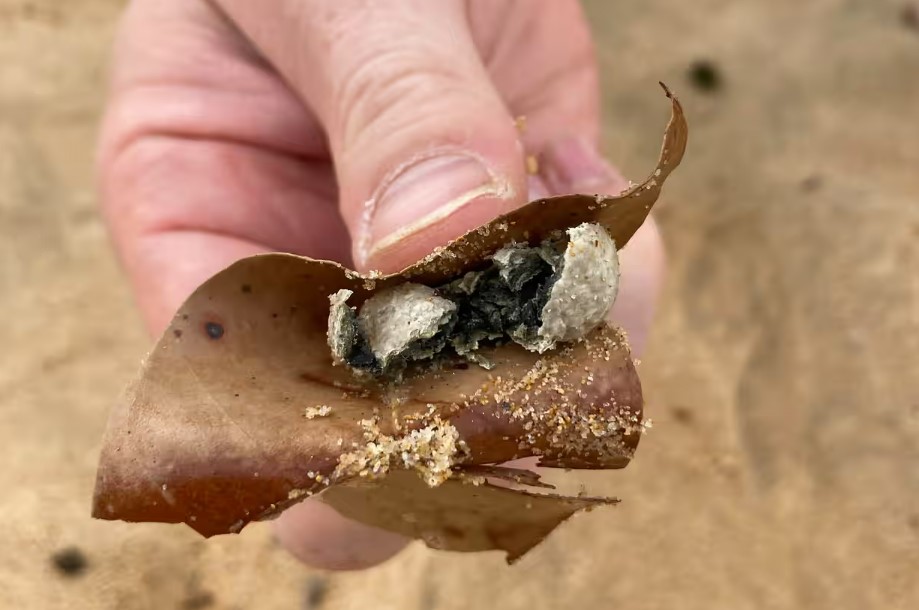The pristine shores of Sydney, Australia, faced an unsettling invasion in early 2024 as mysterious grey balls, ranging from the size of marbles to larger, washed ashore, forcing the closure of nine popular beaches. These beaches, including the iconic Manly Beach, a popular destination for tourists and locals alike, were shut down as authorities grappled with the unknown nature of these spherical objects. The Northern Beaches Council, baffled by the sudden appearance of the debris, collaborated with the state’s environmental agency to collect samples for analysis. The incident sparked concern and speculation, with Northern Beaches Mayor Sue Heins expressing worry over the unidentified source of the material. Sydney Water, however, denied any connection to the incident, stating that their wastewater treatment plants were operating normally and within regulatory compliance. They referred to the debris as “grease balls,” a description that did little to alleviate public concern.
This incident echoed a similar event in November 2023, when black spheres washed up on Sydney’s beaches. Initially likened to miniature “fatbergs,” these foul-smelling objects were later revealed to be a disturbing concoction of human waste, recreational drugs, medication, and other materials. The origin of these earlier spheres remained a mystery, with experts unable to pinpoint the source despite extensive analysis. The recurring nature of these events raised serious questions about the effectiveness of current wastewater treatment systems and the potential for ongoing environmental contamination. Environmental groups seized the opportunity to criticize Sydney Water, highlighting the volume of waste discharged into the water annually and questioning the adequacy of existing treatment processes.
The reappearance of these mysterious balls in 2024 further intensified public anxieties and environmental concerns. The lack of definitive answers from authorities only fueled speculation and underscored the need for thorough investigation and potential improvements to wastewater management practices. The incident highlighted the vulnerability of coastal ecosystems to pollution and the potential health risks associated with unknown contaminants. The closure of popular beaches not only disrupted recreational activities but also served as a stark reminder of the interconnectedness between human activities and the health of the marine environment.
The November 2023 incident, with its shocking revelation of the composition of the black spheres, had already shaken public confidence. The 2024 event, with its eerily similar nature, only exacerbated those concerns. The inability of experts to determine the source of the pollution, despite extensive testing and analysis, highlighted the complexity of the issue and the need for further research and improved monitoring systems. The incidents also underscored the importance of public awareness and responsible waste disposal practices to minimize the potential for similar occurrences in the future.
The recurring nature of these events exposed a potential systemic issue within Sydney’s wastewater management system. The inability to definitively pinpoint the source of the pollution, even after the November 2023 incident, highlighted a critical gap in monitoring and accountability. Environmental groups argued that these incidents were indicative of a larger problem, pointing to the significant volume of waste discharged into the water annually and questioning the adequacy of current treatment technologies. The incidents served as a wake-up call, prompting calls for increased investment in research, infrastructure upgrades, and stricter environmental regulations to prevent future contamination events.
The mysterious beach ball incidents, occurring within months of each other, highlighted the ongoing challenges faced by coastal communities in maintaining the health and safety of their shorelines. The lack of definitive answers from authorities, coupled with the disturbing composition of the earlier spheres, created a climate of uncertainty and concern among residents and visitors alike. The incidents served as a stark reminder of the delicate balance of marine ecosystems and the importance of proactive measures to protect these valuable resources from pollution. The ongoing investigation into the origin of the grey balls promises to shed further light on the issue and potentially lead to improved wastewater management practices in the future.




